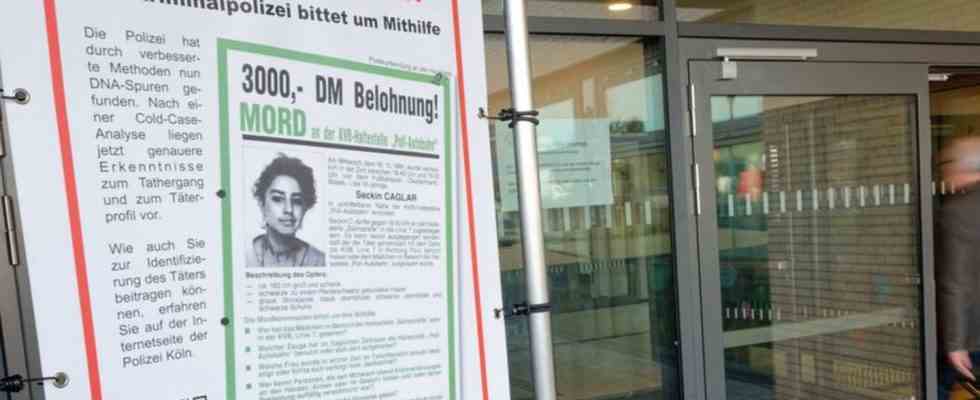Cold Cases investigation team
Young people murdered in 1991 – mass DNA test “started well”
Around 32 years ago, the then 16-year-old Seckin Caglar was killed by an unknown person on her way home from her job. photo
© Henning Kaiser/dpa
Investigators in Cologne want to find the perpetrator who murdered 16-year-old Seckin Caglar 32 years ago. In a DNA series examination, 355 men are asked to submit a saliva sample.
The murder of a teenager in Cologne 32 years ago is still unsolved – that’s why the police have now started a mass genetic test. At the first appointment on Saturday, according to a spokeswoman, around 200 men gave a saliva sample in an elementary school by early evening. In total, the police wrote to 355 men who lived in Cologne-Poll on the right bank of the Rhine at the time of the crime or who had some other connection there.
“It started well,” said the police spokeswoman when asked by dpa. The addressee was also given March 26 as an alternative date. In addition, a few people had previously given the police a saliva sample voluntarily because they would be unable to attend both dates, the spokeswoman said.
On October 16, 1991, 16-year-old Seckin Caglar got off the tram and disappeared on her way back from work. The next day her body was found behind a bush near the bus stop in Poll. The girl had been sexually abused and strangled.
Cold Cases investigative team reopens case
The “Cold Cases” investigation group of the Cologne police recently reopened the case. A few days ago she launched a large-scale publicity campaign with posters, flyers and her own website so that potential witnesses could get in touch. Prosecutors have offered a $5,000 reward for information leading to the perpetrator. “We want to make it clear to him that we are on his heels,” said homicide chief Markus Weber.
Traces of the killer’s DNA were found on the body. With the serial test, the police want to exclude people as perpetrators – and at best get the murderer on the ropes. According to the police, thanks to new analysis methods, a DNA sample can also be used to determine whether someone is related to the perpetrator.
“Participation is voluntary and is aimed at witnesses,” said senior public prosecutor Ulrich Bremer in advance. But it is also clear: “If someone does not participate, we will of course take a closer look at this person.”

